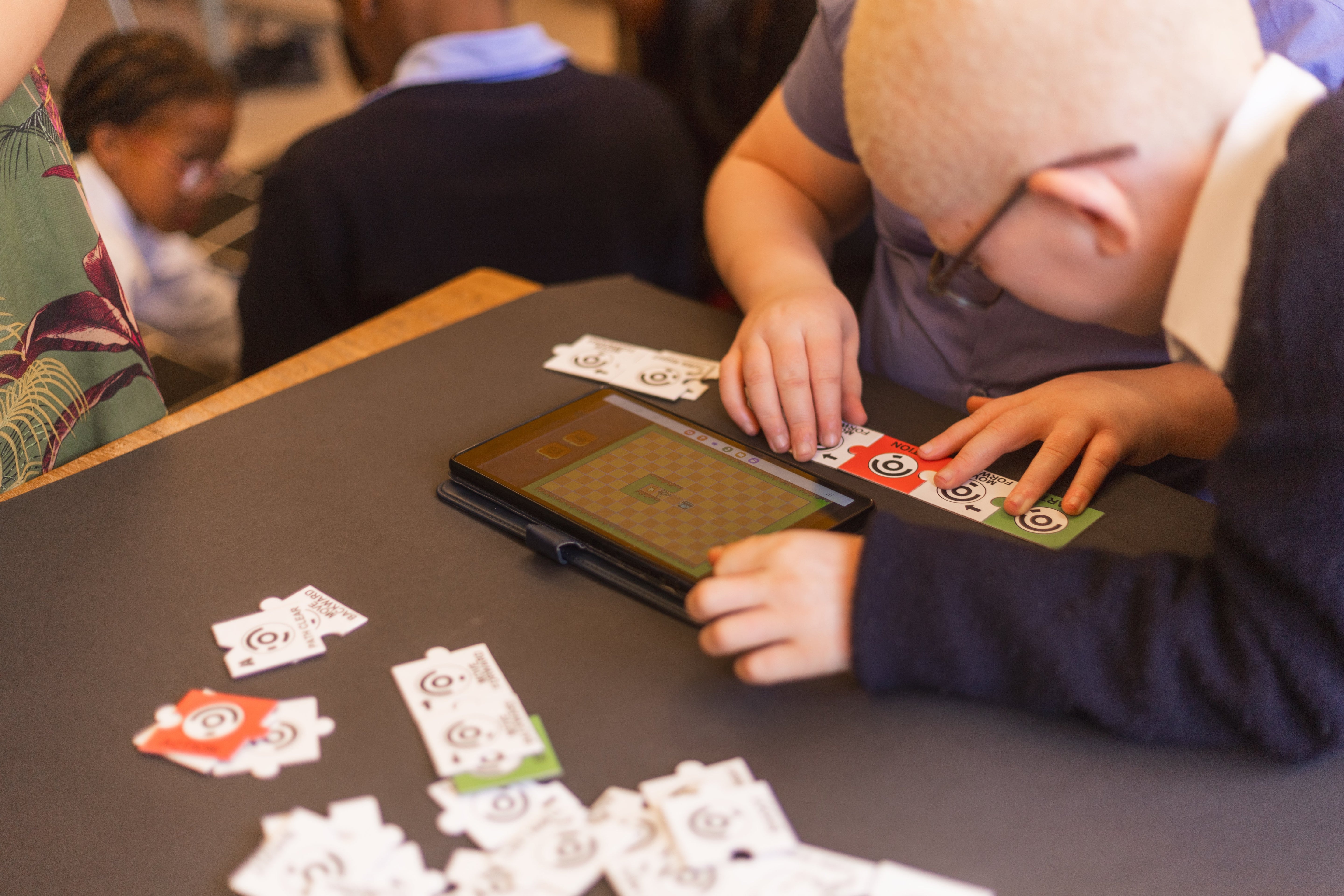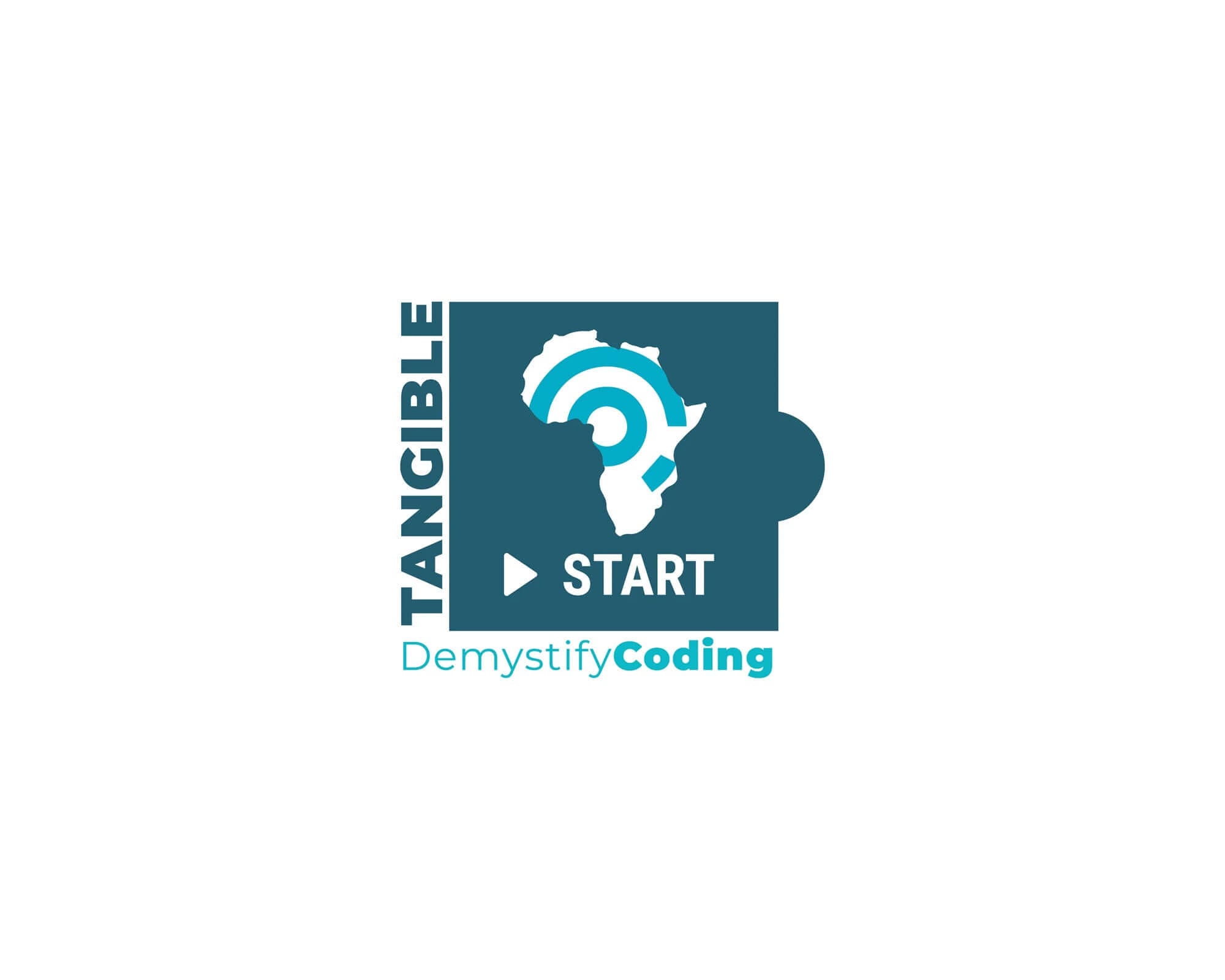
How does Tangible work?
Tangible works by using a game to challenge and motivate children to achieve a learning outcome - in this case, computational thinking; sequencing and coding fundamentals.
Children are presented with a series of puzzles - to instruct a character onscreen to reach a goal. The game will instruct pupils to solve each puzzle by laying puzzle tiles on their table and taking a photo of their arranged tiles. The game will then execute the instruction that the pupils have provided, allowing them to test ideas and receive immediate feedback without the need for teacher intervention or instruction.
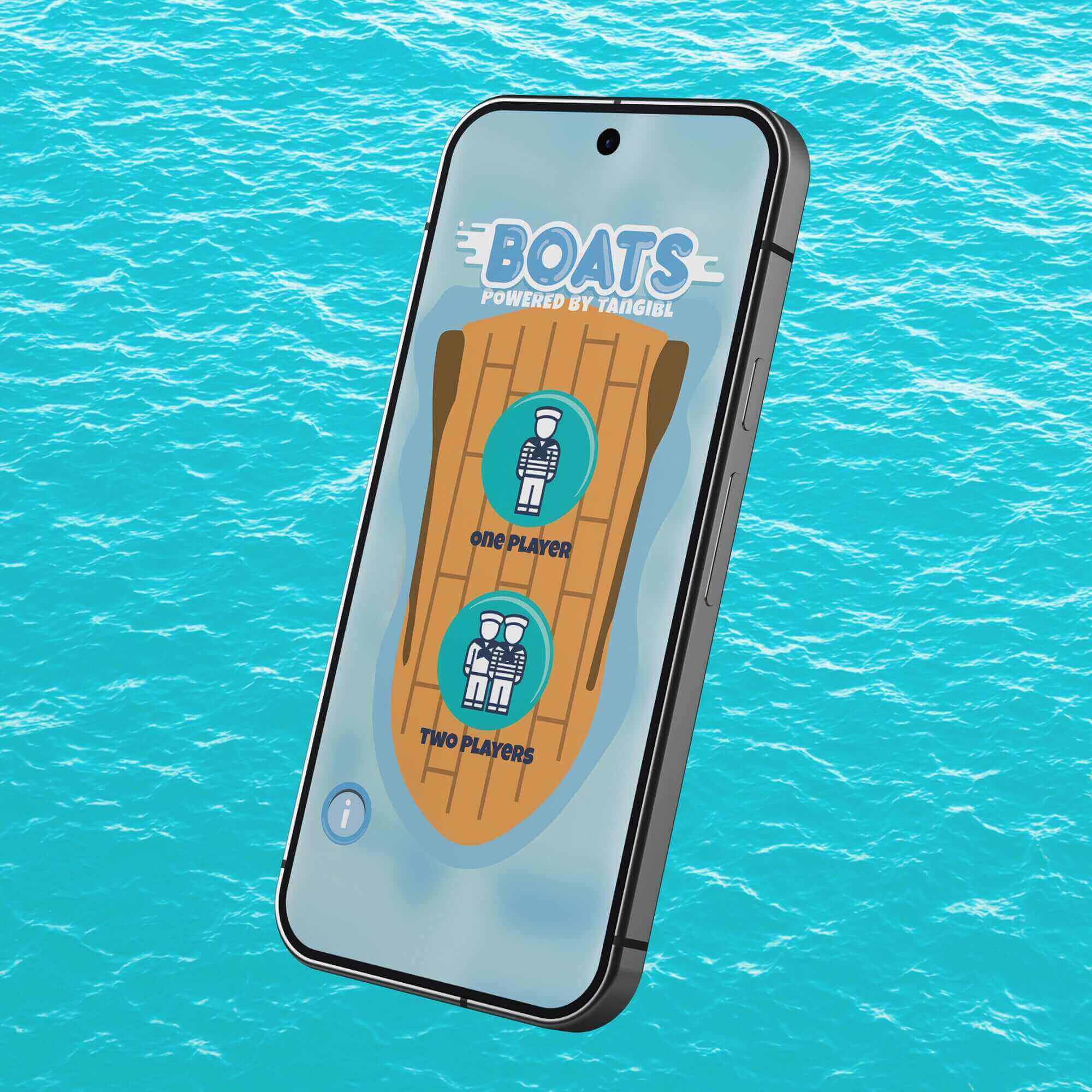

Tangible Boats
Introducing the fundamental elements of coding while educating learners about the detrimental impact of pollution on the ocean.
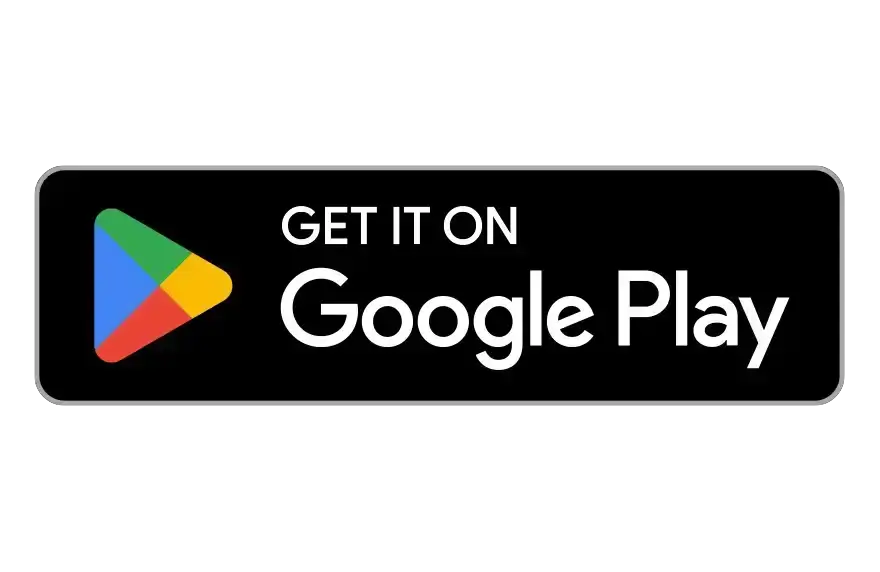
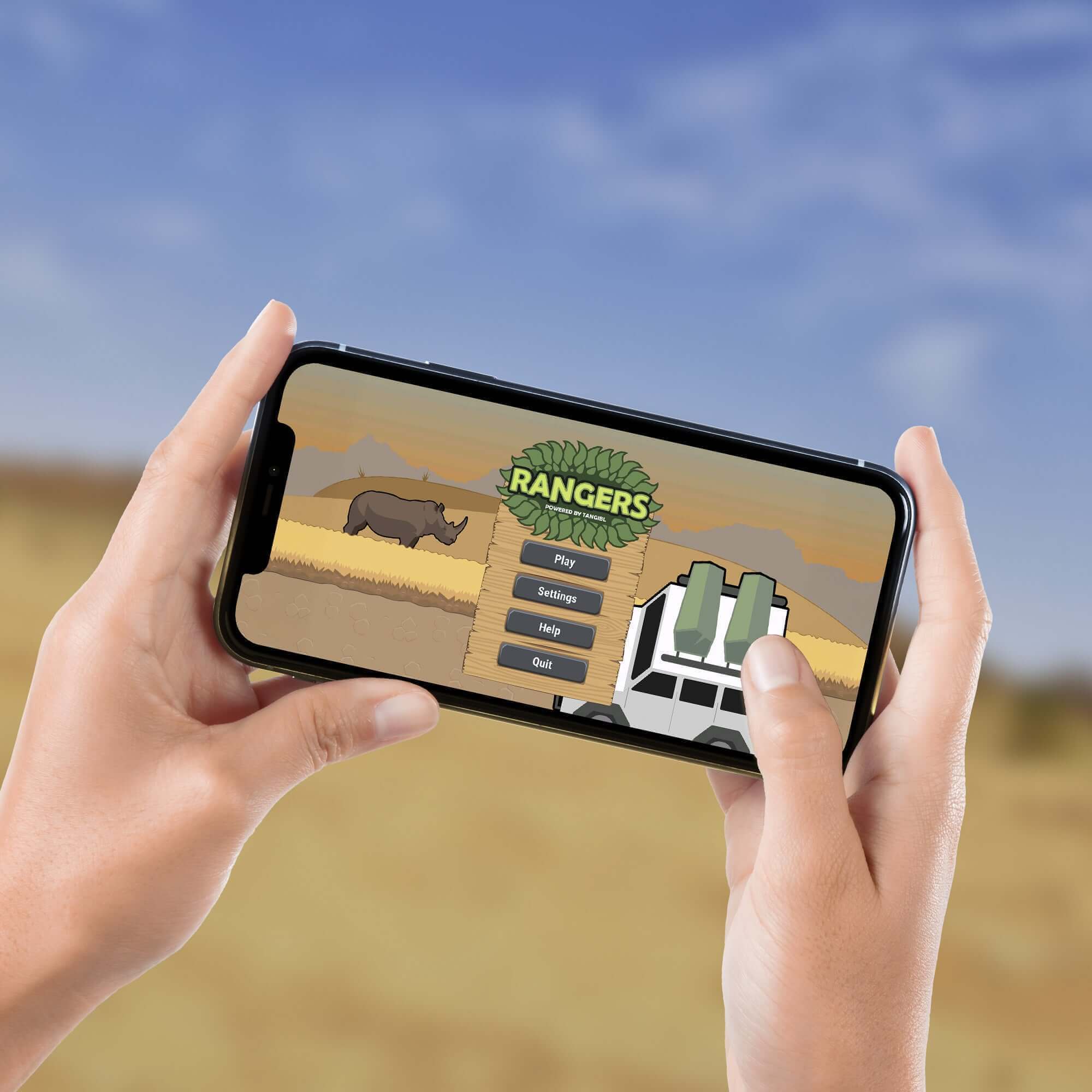
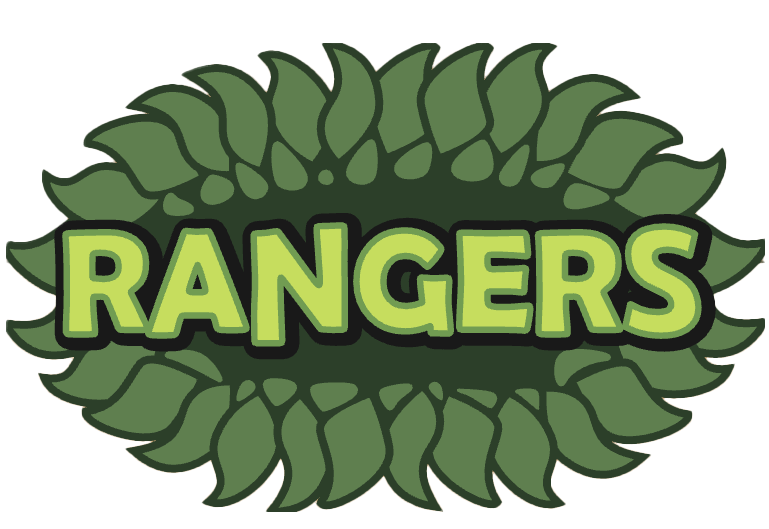
Rangers
Introduces intermediate coding skills and educates learners about the importance of animal conservation and the consequences of poaching.

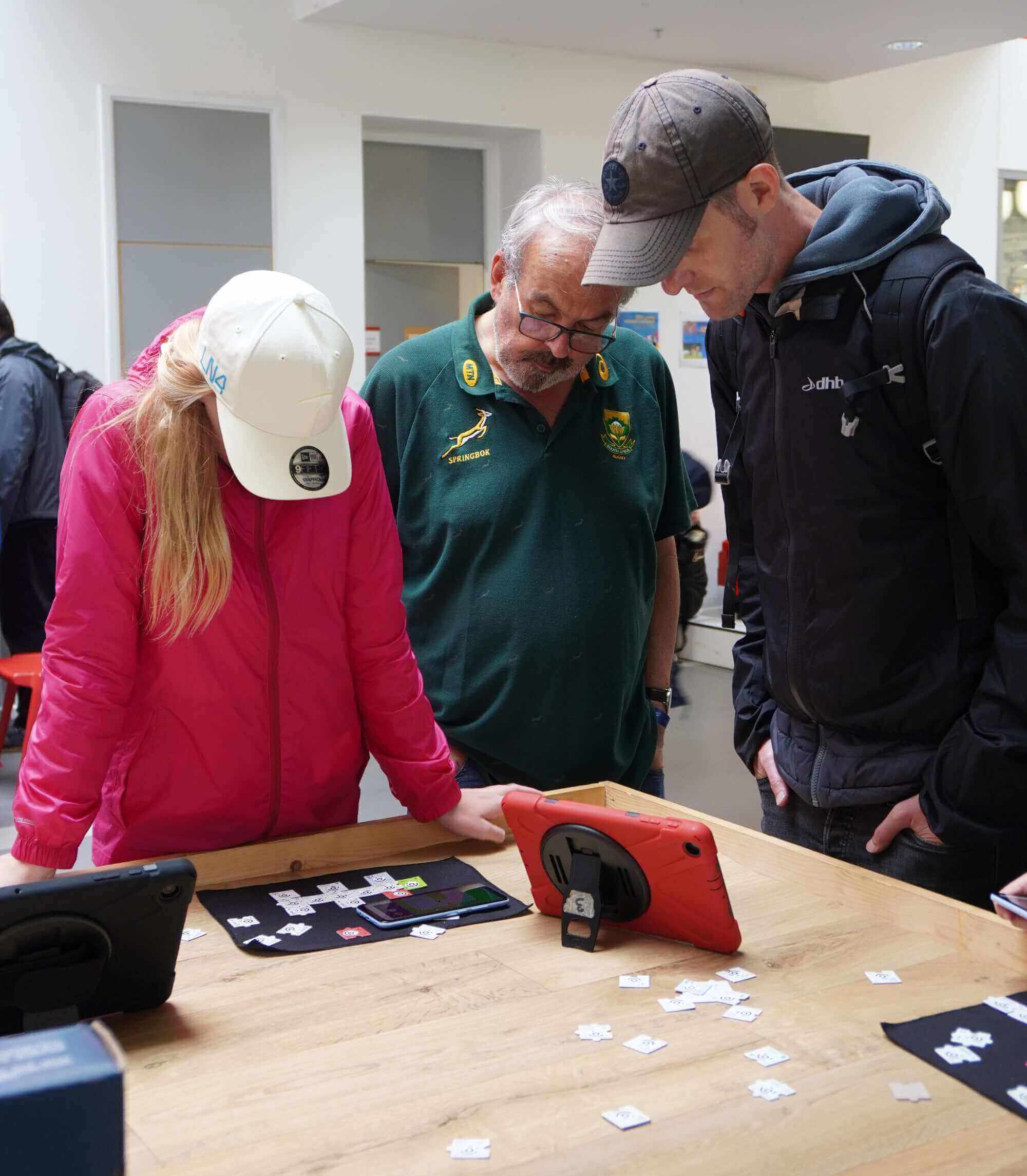
Subscribe for Game Updates
Complete the form below to receive updates on the latest Tangible games. This form must be completed by those age 18+ only.
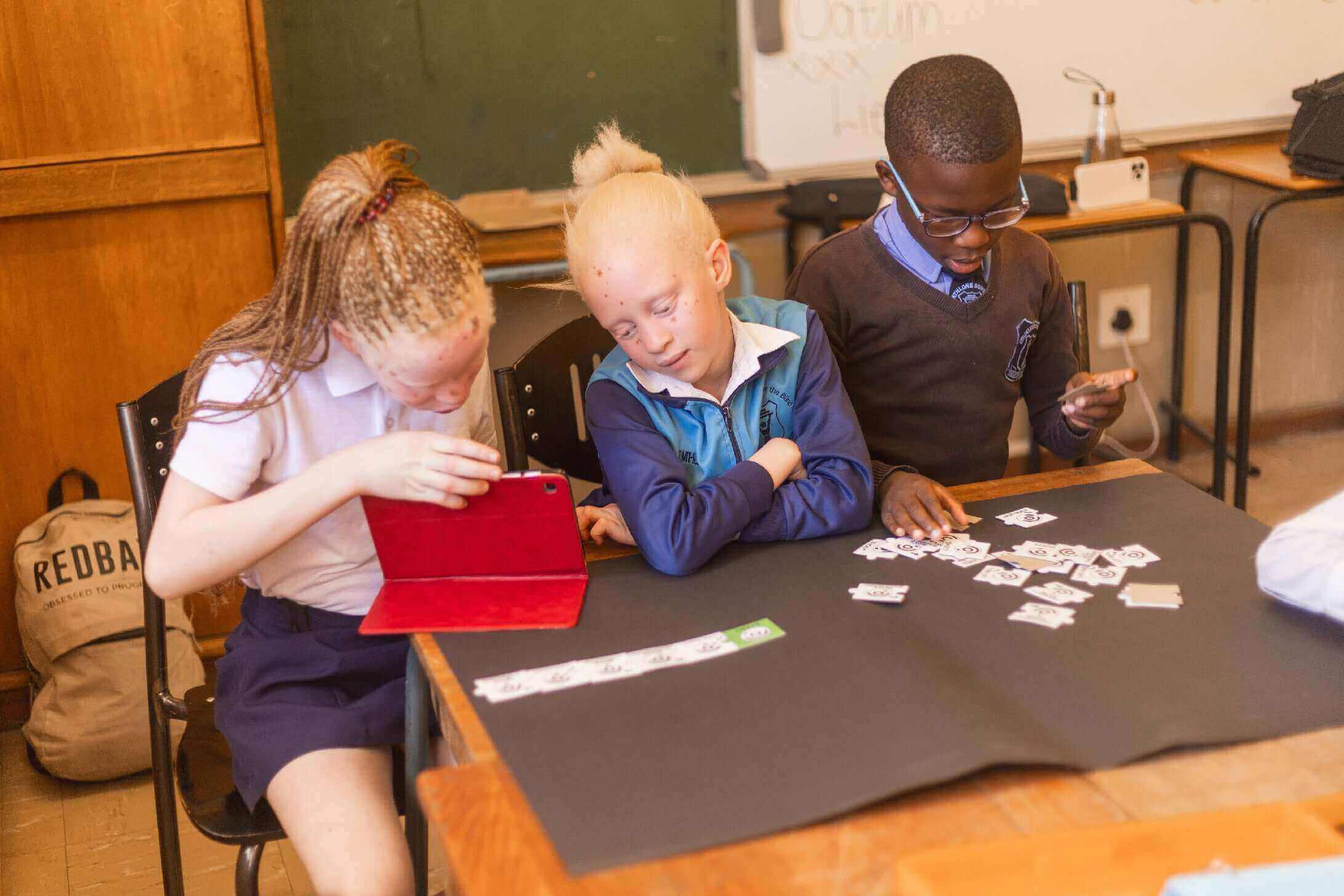
About Tangible
Tangible was created in 2017 when Byron Batteson, a 21-year-old student, created an app to enable children to develop Computational Thinking skills for his Honours project at Nelson Mandela University, South Africa.
Professor Jean Greyling, head of the Computing Sciences Department, recognised its potential and transformed the idea into a full-fledged operation. This venture started as a university engagement project and showcases the power of student-teacher collaboration. Byron is now with Amazon in Cape Town, while Prof. Greyling continues to lead Tangible and inspire students.


